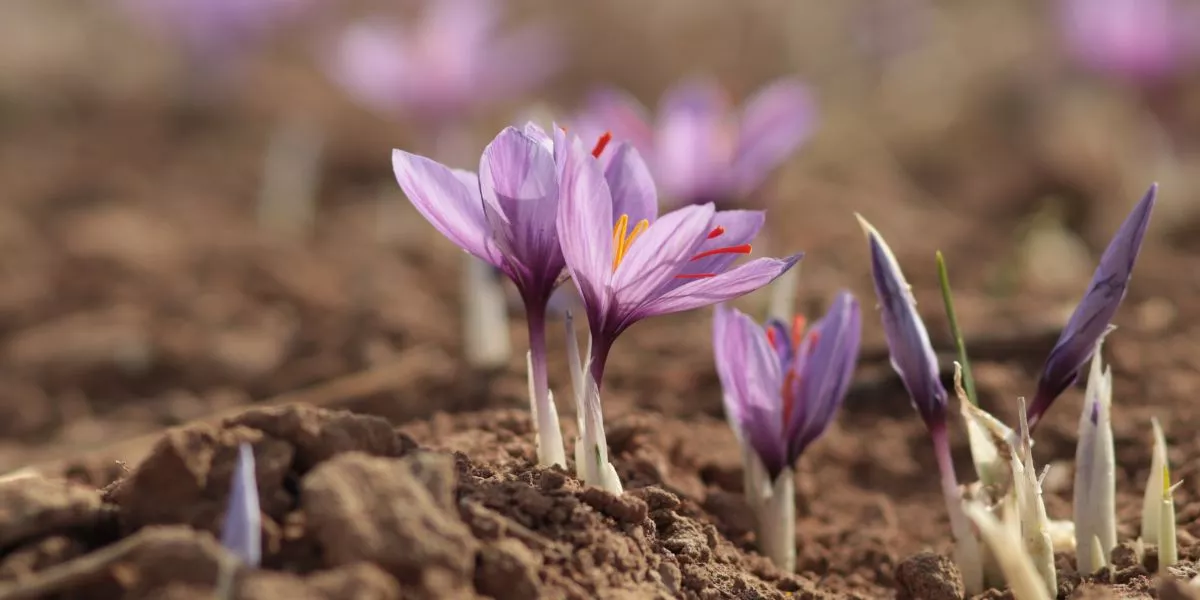
So, you're curious about the journey saffron bulbs embark on to become the world's most coveted spice. From the moment those bulbs are nestled into the soil, a meticulous process unfolds. But what exactly happens as they grow and transform into the sought-after saffron spice? Stay tuned to uncover the intriguing stages that lead to this prized and expensive culinary gem.
Planting Saffron Bulbs
To cultivate saffron, you begin by carefully planting the bulbs in well-drained soil during the fall season. Choose a sunny spot with soil that drains well to ensure the bulbs don't rot. Plant the bulbs about 3-5 inches deep and space them around 4 inches apart. Make sure to place the bulbs with the pointed end facing up to allow for proper growth. Once planted, cover them with soil and water gently.
As the fall season progresses, keep an eye on the soil moisture levels. Saffron bulbs prefer soil that's slightly moist but not waterlogged. Avoid overwatering, as this can cause the bulbs to rot. In colder climates, consider adding a layer of mulch to protect the bulbs during the winter months.
With proper planting and care, your saffron bulbs will begin to sprout in early spring. Patience is key, as it may take a couple of years before you start to see a significant harvest of saffron threads. But with attention to detail and the right conditions, you'll soon be on your way to producing your own supply of the world's most expensive spice.
Nurturing Saffron Flowers
After successfully planting your saffron bulbs in well-drained soil, the next step involves nurturing the delicate saffron flowers to ensure a bountiful harvest of the prized spice.
Saffron flowers require attentive care to thrive. Ensure they receive adequate sunlight, preferably about 8 hours a day. Water them regularly but avoid overwatering, as saffron bulbs are susceptible to rot. Keep an eye out for pests and diseases that may harm the flowers; organic pesticides can help combat these issues without harming the plant.
As the flowers bloom, gently inspect them for any signs of damage or disease. Remove any unhealthy flowers to maintain the overall health of the plant. Be cautious when weeding around the saffron flowers, as their delicate bulbs are easily disturbed. Additionally, consider providing support to the flowers if they grow too tall or appear fragile.
Harvesting Saffron Stigmas
Harvest saffron stigmas with precision to preserve their delicate nature and exceptional flavor. When the saffron flowers bloom in the autumn, it's time to carefully hand-pick the vibrant red stigmas. Use tweezers or your fingers to pluck each stigma with precision, ensuring you don't damage the fragile threads.
To maintain the quality of the saffron stigmas, harvest them early in the morning when the flowers have just opened. This is when the stigmas are most potent and flavorful. Avoid harvesting during rainy or humid days, as moisture can degrade the saffron's quality.
After collecting the stigmas, gently dry them to preserve their aroma and taste. Lay the stigmas in a single layer on a paper towel or a mesh tray in a well-ventilated area. Allow them to air dry for several days, ensuring they're fully dehydrated before storage.
Processing Saffron Spice
When processing saffron spice, delicately separate the vibrant red stigmas from the rest of the flower to preserve their unique flavor and aroma. Each saffron crocus flower yields only three red stigmas, which are the valuable parts used for making the spice.
After carefully plucking the stigmas by hand, they undergo a meticulous drying process. To maintain saffron's quality, the stigmas are typically dried in a well-ventilated area away from direct sunlight. This drying process is crucial as it helps intensify the flavor and aroma of the spice.
Once dried, the stigmas are ready to be packaged and sold. Saffron's potency and distinct flavor make it a prized spice in various cuisines worldwide. The intricate process of processing saffron spice highlights the care and effort required to produce this highly sought-after culinary ingredient.




